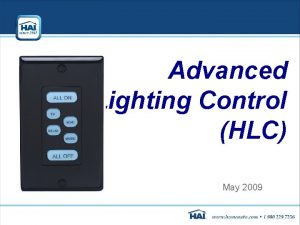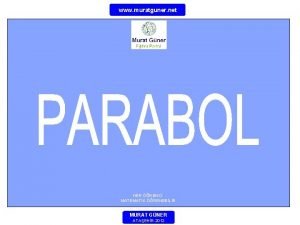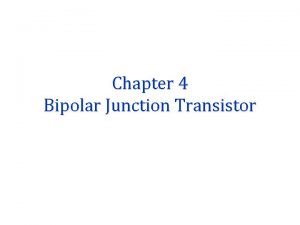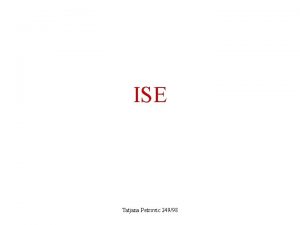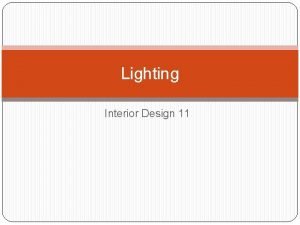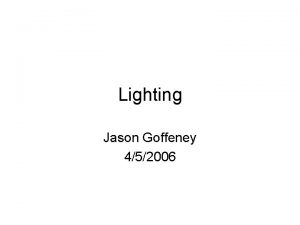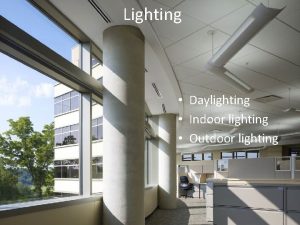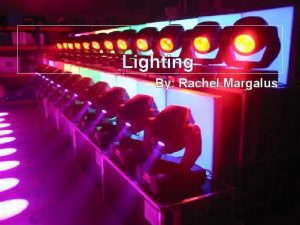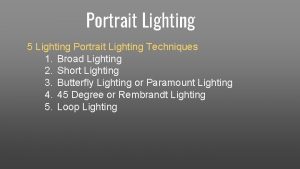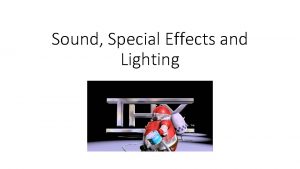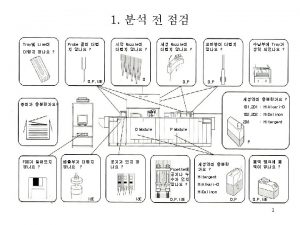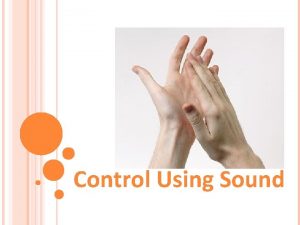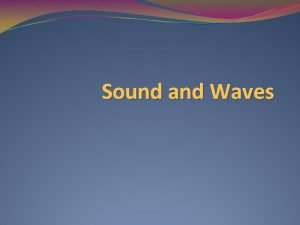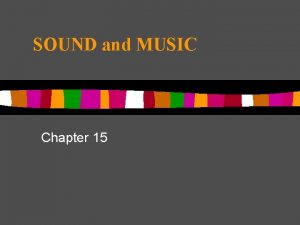LIGHTING AND SOUND N 0 ISE CONTROL METHODS





























- Slides: 29

LIGHTING AND SOUND (N 0 ISE CONTROL METHODS) NAME: KHALOUD SOUD ALI AL-ABRI ID: 06884889 SHECK BY: Dr. NOOR HANEATA

(N 0 ISE CONTROL METHODS) 1 - NOISE BARRIERS 2 - BULDING PARTITION DESIGN 3 - BUILDING FLOOR/ CEILING DESIGN 4 - BUILDING EXTERIOR ENVELOPE DESIGN

1 - NOISE BARRIERS I A noise barrier is a wall, screen, building, or other impervious structure that breaks the line of sight between a source and receiver. next we will show a chart which illustrate the relationship between frequency & barrier insertion loss


(near) (far) SOURCE (near) BARRIERS RECEIVER (far) IT NEED A MORE COMPLEX MATHEMATICAL

WHISPER WALL Noise Barriers Noise Barrier walls reduce noise levels for people living next to highways, • either by absorbing the noise energy or by reflecting the noise energy. Both methods work, however, sound absorption is more efficient and less likely to produce unexpected results. Sound absorbing precast concrete noise barrier walls allow sound waves to • enter the wall, as the sound waves travel through the sound absorbing mixture they are forced to change direction and follow a longer path. Every change in direction decreases the sound waves energy. After the sound waves completes its journey through the wall, little, if any sound energy remains to reenter the environment. In comparison, reflective noise walls abate noise by redirecting sound waves • into the atmosphere. This is risky because reflected sound waves traveling through the atmaosphere and can bend upward or downward depending upon existing meteorological conditions. Consequently, as atmospheric conditions change , the accuracy to predict how • reflected sound waves travel decreases. This explains why some residents living across from a reflective noise barrier may experience new sounds and / or increased noise levels. Sound Absorbing Noise Barriers are an effective way to reduce noise levels • for people living behind a noise wall and for people living opposite the noise barrier. •


Reduce Traffic Noise Which Impacts Your Home or Business • Sound engineers contend that sound transfers through any • void that water can; for sound walls to be effective, all voids, joints and cracks should be sealed to effectively minimize the sound transfer. The unique integral casting of the Combo. Cast™ full height panel/column into a monolithic unit, combined with the sealed interlocking nature of Stone. Tree® Combo-Cast™ wall panels, creates an environment where the sound cannot penetrate through cracks, joints and crevices, which is a big step ahead of all the other reflective sound walls in the marketplace. Stone. Tree® Precast Concrete Fence Walls are capable of reducing traffic noise levels up to 10 decibels, which is basically cutting the noise in half. Stone. Tree® Noise Barrier Walls are available in a variety of heights, to ensure your property receives the highest level of noise cancellation and abatement obtainable.

Magnesia core board in sheets can be applied to • wood structures (below) and/or metal framing (above) or directly on to steel structure and masonry work with mechanical fasteners (screws, bolts, rivets, brads, staples, nails) and can also be used to laminate over existing surfaces using adhesives and cements. Used with a variety of joint fillers for different levels of resistance as desired or demanded by your specific application.

2 - BULDING PARTITION DESIGN Building interior partitions are generally of three types. These are: 1 - Gypsum wallboard (GWB) on a wood or metal stud frame. 2 - Masonry block. 3 - Some combination of types 1 and 2 (STC).


• Soundblox are load-bearing structural units with the same high compressive strength as ordinary hollow concrete masonry units of the same composition. • They are installed conventionally, with little or no added labour, making their inplace cost low in comparison to most other acoustical materials. In addition to high sound absorption, Soundblox walls have superior sound transmission loss performance (STC) when compared to walls of ordinary masonry units of the same composition. • • The rugged durability of Soundblox units permits the use of walls in industrial plants, gynasiums and mechanical equipment rooms etc. Soundblox units provide practical means to build high sound absorption into the walls and balance the absorption in all directions. Soundblox have a close tight texture finish which is ideal for painting. • • Areas where Soundblox should be considered: • School Auditoriums, Corridors & Classrooms, Gynamsiums, Lecture Rooms, Mechanical Equipment room, Multi-purpose rooms, Music rooms, Vocational rooms, Industrial Plants, Boiler Rooms, Engine Exhaust stacks, Fan rooms, Noisy Plant Areas, Partitions, Churches, Naves & Transepts, Social Halls, Generator rooms, Outdoor transformer screens, Aircraft maintenance & overhaul hangers, Airport facilities, Bowling alleys, Car Wash facilities and many more. . •


A vibration absorbing resilient steel channel used • on timber studs for walls and ceiling joists. This allows the new wall or ceiling to be de-coupled from the vibrating surface which will reduce both vibration and impact noise penetration to substantially improve the sound insulating qualities of the wall or ceiling. This is an essential element to be used for all domestic soundproofing projects, flat conversions and . upgrades and new build


absorbing Resilient Bars are also recommended to upgrade the sound insulation of any wall; particularly effective at reducing loud music or bass noise penetrating the wall. Ideally, a new stud batten frame built spaced away from the current • wall is required. This will create a sealed, insulated gap between the new wall and the existing one. Fill in between the studs with our sound absorbing Acoustic Mineral Wool. Care should be taken not to fit the acoustic mineral wool too tightly. A loose fit is better than a tight fit. The Resilient Bars are screwed to the stud frame horizontally from • floor to ceiling using our self drilling screws followed by two layers of 12. 5 mm Acoustic Plasterboard. For best results, a layer of SBM 5 Soundproofing Mat should be sandwiched between the two layers using Sta-Put aerosol contact adhesive specifically developed for bonding all of our soundproofing materials. It is essential that both layers of plasterboard do not touch the • surround walls or floor. Fill in this gap with flexible acoustic sealant and then the entire soundproofed section of wall will be floating on the bars. •

STC rating Wall weight

3 - BUILDING FLOOR/ CEILING DESIGN With building floor and ceiling constructions, there are two aspects that need to be considered: 1 - airborne sound isolation using the STC rating. 2 - impact sound isolation using the IIC rating.

Airborne Sound Transmission Airborne sound transmission in interiors deals with how well • sound is controlled from room to room, and from the outdoors to indoors (or vice versa) through walls and ceilings. Sound transmission loss is the decrease in sound energy when it passes through a building element. Different materials provide different levels of transmission loss and, thus, different levels . of diffusion of sound Dense, heavy materials increase the mass of floors and walls, • allowing less sound to pass through. De-coupling can also be used to control sound, in this case. A break in framing or a resilient drywall connection breaks the path of vibration for the sound wave, causing it to halt. This is the most effective method for controlling strong, low frequencies, which are the hardest to block. Blocking airborne sound from leaking . through gaps and cracks by sealing them is also effective

Impact-Sound Transmission After an impact noise is transmitted through a floor or ceiling • assembly, the airborne sound that has made it through is the impactsound transmission. The sound of someone stomping around on the floor above you is an impact sound transmitted through the ceiling to the room you are in. As with airborne sound transmission and sound absorption, the media of building materials used in construction come . into play Wood joist floor-ceiling systems transmit a lot of impact sound. • Adding fiberglass insulation will improve their capability of blocking impact sound, as will decoupling by using a wire-suspended drywall ceiling. Lightweight concrete flooring is generally good at reducing airborne sound transmission, but it does not do as well blocking impact sound. De-coupling is crucial to improving impact sound control in this instance. Resilient underlayments beneath floating . floors can isolate the finished flooring from the concrete slab


The sound transmission class (STC) rating of a floor measures only the reduction in airborne sound transmission. A floor, however, also transmits structure-borne sound, such as footsteps or a slammed door, directly . through the materials The ability to reduce impact sound is rated by the Impact Isolation Class (IIC) . rating The most cost-effective technique to reduce impact noise is to add a carpet . and pad For example, adding a carpet and pad to a conventional plywood subfloor over a gypsum ceiling increases the IIC rating from 37 to 65. By comparison, . it increases the STC rating by only 4 points Where higher STC and IIC ratings are needed, a resilient channel can be . added to the ceiling below Where this is not possible, for example when the joists are exposed below, you can use a floating floor over a layer of soundboard or a high-mass floor over a layer of sand or lightweight concret

See our Table of STC and IIC ratings for Typical Wall/Ceiling Assemblies - also • . shown in part at the top of this article or in a single IIC levels are of greatest concern in stacked multifamily dwellings • . -family dwelling with bedrooms below other living spaces Acoustical experts recommend a minimum IIC rating of 50 to 55 in ceiling/floor • . construction, separating living units in multifamily construction IIC levels are of greatest concern in stacked multifamily dwellings or in a single • . -family dwelling with bedrooms below other living spaces Acoustical experts recommend a minimum IIC rating of 50 to 55 in ceiling/floor • construction, separating living units in multifamily construction. HUD . Table 5 -20 recommendations for bedrooms under living spaces are shown in While these recommendations were developed for multifamily dwellings, they provide reasonable targets for single-family homes where sound privacy is . desired Table 5 - HUD recommendations for bedrooms under living spaces are shown in • Table of Minimum Sound Insulation for Ceiling/Floor Assemblies Above our 20. Bedrooms • Table 5 - HUD recommendations for bedrooms under living spaces are shown in • Table of Minimum Sound Insulation for Ceiling/Floor Assemblies Above our 20 Best Practices Guide to Residential Adapted with permission from --. Bedrooms. Construction


Use a Sound Control Underlayment for Laminate Floor • Installations Roberts Our photo (left) (from a Home Depot® display) shows • Air. Guard™ laminate flooring underlayment Consolidated Industries . product used for "click-lock" and laminate floors • This flooring underlayment incorporates raised foam beads that add • sound-deadening cushioning below the laminate floor while also, according to the manufacturer, permitting some air movement below the flooring material. The underlayment is also treated with . Microban® to reduce mold growth

4 - BUILDING EXTERIOR ENVELOPE DESIGN When you are build you should know: - The distance between the facad and noise source. - You should calculate the moment of noise sound. - What the material can we use to increase STC.

Reduce noise to boost marketability • . and comfort

Specialty Construction Materials for Sound Control There a number of specialty materials available for sound control. These are • designed to provide strategic advantages over traditional materials, and are designed for use in situations where controlling sound or noise levels is of great concern. Many of these materials can be used during an initial build or installed at a . later date, if the situation necessitates it. Some common examples are listed here Mineral-fiber insulation is a special, denser type of insulation that can be used to • improve a room’s level of soundproofing. Its density is much higher compared to traditional fiberglass insulation, which makes it far more effective at stopping the transmission of sound from one room to another. Mineral-fiber insulation also has a much higher burning point than standard fiberglass insulation, as well as a lower rate . of moisture absorption Sheets of limp mass, dense vinyl sound barrier are available for covering flat surfaces. The sheets are flame-retardant, and easy to install with plastic-cap nails or staples, or one can use trowel-applied, multi-purpose vinyl flooring adhesive. They are also available with an adhesive backing for even easier installation. These coverings are safe, inexpensive, and easy to work with. They can be cut with a standard utility knife . or scissors •

Floor de-couplers can be used to “float” a floor. De-coupling a floor is an • effective way to minimize sound transmission. These floaters can be placed between the existing floor and a new level of flooring installed on top of them. They are inexpensive and will allow for the additional level of flooring to be . removed at a later date, returning the floor to its original state Resilient channels are pieces of metal made in a special shape that gypsum • board or any type of drywall can be attached to in order to minimize sound transmission. One side of the resilient channel is attached to the stud, and the drywall is attached to the other side. Drywall that is isolated from framing in . this manner will transmit far less sound than drywall mounted directly to studs Optimal control of noise in buildings can be achieved by understanding the • basics of how sound moves through solid objects and air. Building materials will have the most impact on controlling sound in interiors, but strategic placement of absorptive materials in finished areas can also be very effective. Many of the materials listed above can be incorporated into a build when the situation calls for it, or installed at a later date, if it becomes . necessary •
 The higher the amplitude, the _______the sound.
The higher the amplitude, the _______the sound. Hai lighting control
Hai lighting control Wax pattern in dentistry
Wax pattern in dentistry “a sound mind is in a sound body”
“a sound mind is in a sound body” Methods of portion control in bread and pastry
Methods of portion control in bread and pastry Parabolün iç bölgesi
Parabolün iç bölgesi Ise stealthwatch integration
Ise stealthwatch integration Anksiyolitikler
Anksiyolitikler Soufre precipite vazelin fiyat
Soufre precipite vazelin fiyat Cisco ise ordering guide
Cisco ise ordering guide Cisco ise nsp
Cisco ise nsp Cisco ise upgrade readiness tool
Cisco ise upgrade readiness tool Tero ypy
Tero ypy Günlük hayatta matematik ne işe yarar
Günlük hayatta matematik ne işe yarar Lentisel ne ise yarar
Lentisel ne ise yarar Mobile device management cisco
Mobile device management cisco Ic=ise^vbe/vt
Ic=ise^vbe/vt Circuit symbols
Circuit symbols Ekşi yiyecekleri az acıyı ise hiç yemezdi
Ekşi yiyecekleri az acıyı ise hiç yemezdi Akyuvar ne işe yarar
Akyuvar ne işe yarar Bir kişiye maddeye cihaza işe veya iş yürütümüne
Bir kişiye maddeye cihaza işe veya iş yürütümüne Mesleki kariyer
Mesleki kariyer Bir kişiye maddeye cihaza işe veya iş yürütümüne
Bir kişiye maddeye cihaza işe veya iş yürütümüne Nanocad midpoint
Nanocad midpoint Ise tcad
Ise tcad Cisco ise presentation
Cisco ise presentation Depreks 20 mg kilo aldırır mı
Depreks 20 mg kilo aldırır mı Ise&ppooa
Ise&ppooa Ise-express-k9
Ise-express-k9 Ise escalation case workday
Ise escalation case workday

